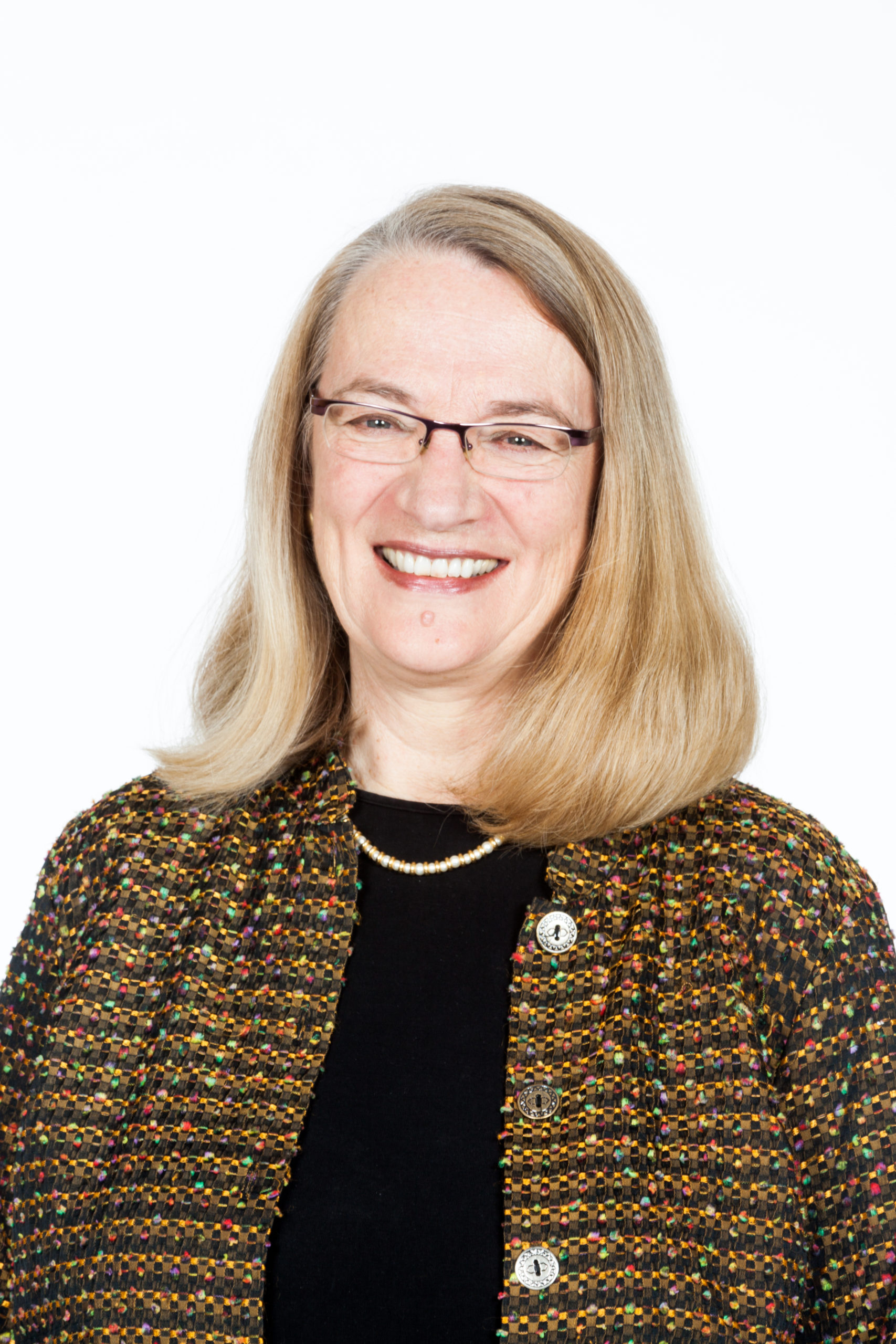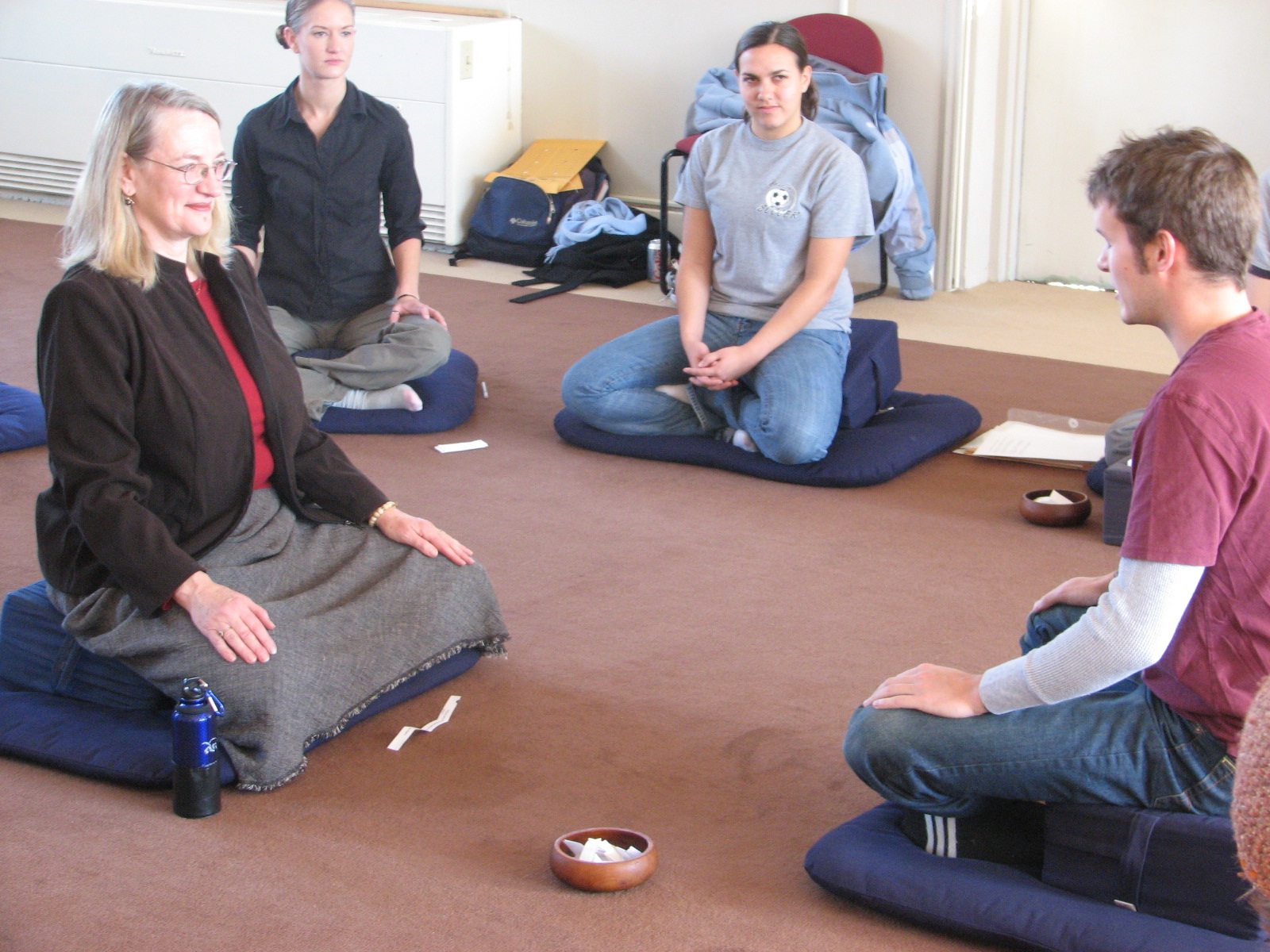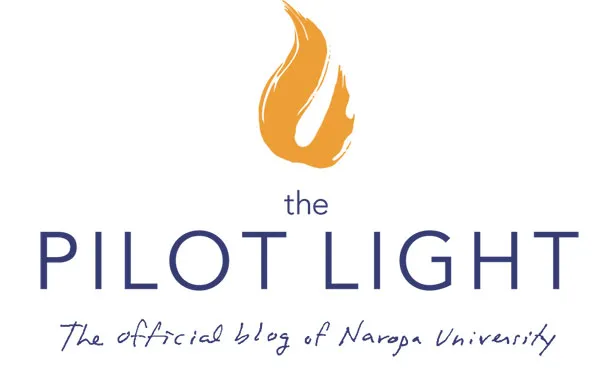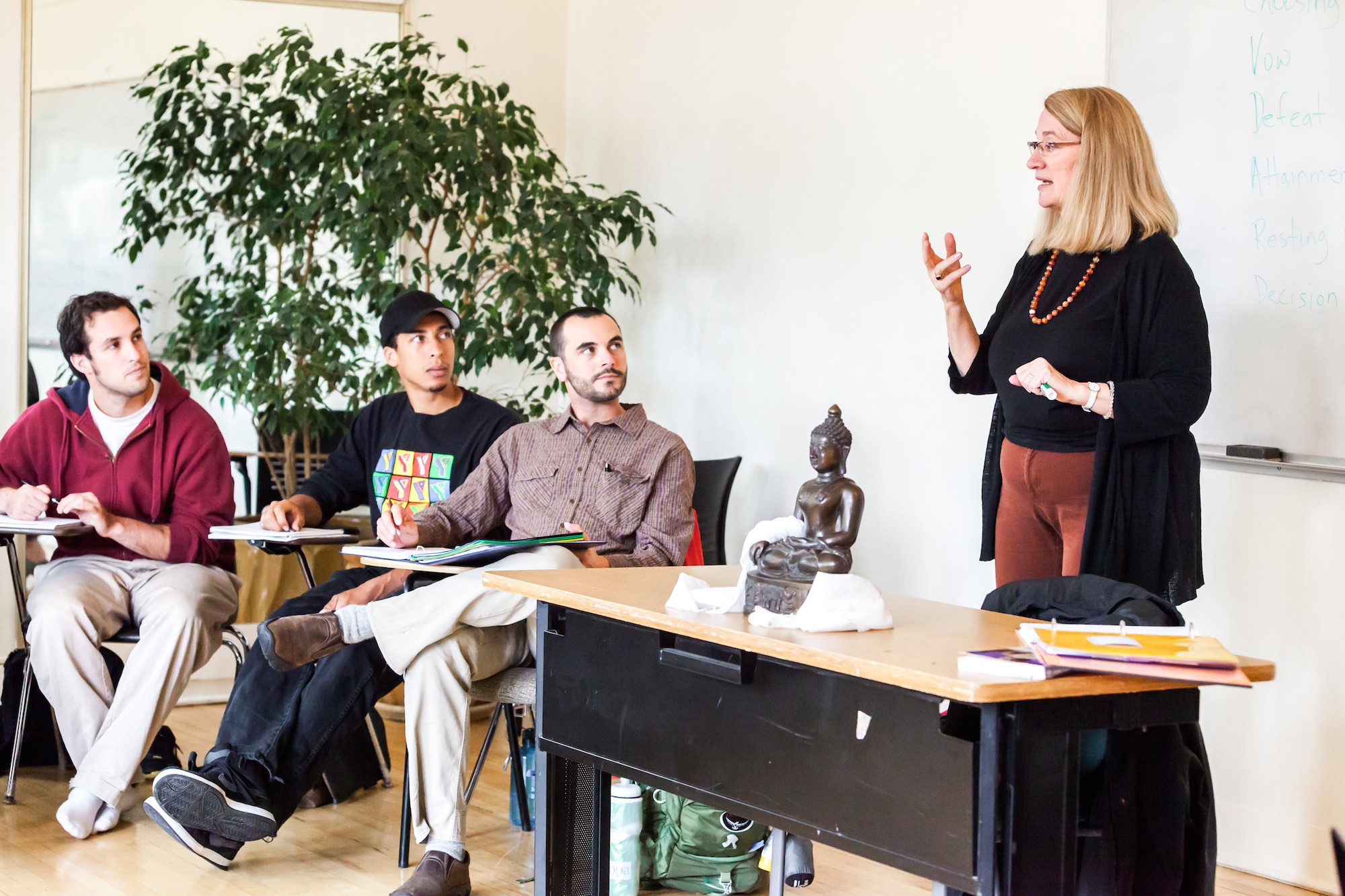This is an excerpt from ‘“’Listening Dangerously’: The Inner Dimensions of Dialogue Training,” The Intersubjective Turn: Theoretical Approaches to Contemplative Learning and Inquiry Across the Disciplines, edited by Olen Gunnlaugson, Charles Scott, Heesoon Bai, and Edward W. Sarath. Albany, N. Y.: State University of New York Press, 2017, 235-248. You can read the full paper here.
 By Judith Simmer-Brown, PhD, Distinguished Professor of Contemplative and Religious Studies
By Judith Simmer-Brown, PhD, Distinguished Professor of Contemplative and Religious Studies
Naropa’s student body is diverse; while our university is Buddhist-inspired, fewer than one-third of students identify themselves as Buddhist. We draw from many religious and spiritual traditions: Protestant, Catholic, Eastern Orthodox, conservative and evangelical forms of Christianity, as well as Hindu, Rastafarian, Sufi and other Muslim, utopian, and New Age spiritual traditions. We have a significant number of Jewish students, as we have a strong Jewish Renewal presence on campus. Many are “dual-belongers” or “spiritual but not religious,” or just seeking in an open-ended way (Fuller, 2001; Camille, 2002).
Interreligious dialogue has become an important community-building activity at Naropa University. The religious studies students in my dialogue classes bring tremendous longing and curiosity to spirituality, but they also bring hurts, resentment, and dogged ignorance of the spiritual journeys of others. Some have been seekers traversing many paths, not willing to commit to any one of them. Others have received no mentorship spiritually at any time in their lives and still do not seek it. Some have been faithful within a single tradition but have been wounded in some way. Others draw deeply from particular traditions but earnestly wish to learn of religious others. Each has much to learn about the fundamental dialogue skills.
[In my Interreligious Dialogue course], students are assigned participation in sustained dialogue outside of class with a religious “other” of their choosing-if possible, with someone outside the Naropa community. I coach students to choose dialogue partners who are sufficiently different to generate a good dialogue, but with whom they have enough common ground to build rapport…Then, they create a dialogue journal that addresses certain aspects of the dialogues: the settings and lengths of time, the questions generated, the flow and tenor of the conversations, and questions that arise. In each of three installments in their journals, students evaluate how well they were able to listen, suspend, respect, and voice in their conversations. While reading their journal installments, I provide additional personalized coaching, so they can deepen the ongoing reflections with their partners.The Inner Dialogue
From each installment of the dialogue journal, students choose a segment of their recorded conversations and transcribe them verbatim. Part of the assignment is to insert into the transcript an excerpt of what they remember of their “inner dialogue” during this part of the conversation. Specifically, I ask them to choose a portion of the transcribed conversation that was challenging, illuminating, or intriguing. Often they choose sections of dialogue during which their inner dialogue was at odds with what they actually said. Over the course of three dialogue meetings, the students are to draw more and more from their inner dialogues in conversations with their partners, to open greater authenticity in these encounters.
Students report that listening to the recordings of their dialogues is one of the most transformative aspects of the course. They hear their own biases and nervousness, and they become curious about moments when they shut down the dialogue. This brings an even richer journey of dynamic inquiry and reflection that affects their ability to open to themselves, and to their dialogue partners.

I have been gratified by the growth in openness, curiosity, and empathy that these dialogues have brought to my students and their dialogue partners. Of course, there have been glitches. Some dialogue relationships became defensive early on and closed down, with little progress over the course of the three meetings, but these occasions have been rare. For the most part, the dialogues have accelerated students’ progress in appreciating differences and developing curiosity, mutual respect, and new ways of listening and speaking with religious others. In their closing self-evaluations, students have shared that they had grown in self-awareness, confidence, as well as humility, and interest in religious others. Many of my students have made commitments to a lifetime of dialogue, and they continue to find partners in their lives and work after Naropa.
What astonished me most in their work was something unexpected; however, when I reflected upon it, I found that it was the key to dialogue as a contemplative practice. When students recorded their inner response to their dialogues, they discovered inner aspects of their spiritual and religious identities that had previously gone unnoticed. Roman Catholic priest and interreligious scholar Raimundo Panikkar (1999) calls this “intra-religious dialogue,” the dialogue within the heart. This dialogue may mirror in some way our encounter with the dialogue partner but reveals the depth of our inner experience that we had discarded or lost. As Panikkar describes, it is “discovering in myself the terrain where the Hindu, the Muslim, the Jew and the atheist may have a place in my heart, in my intelligence, in my life …. [R]eal intra-religious dialogue begins in myself, and … is more an exchange of religious experiences than of doctrines” (Tincq, 2004, p. 3 ).
My students have found this the most valuable aspect of their experience of dialogue, and through their experience, I recognized why dialogue has been such an important part of my own contemplative life. When encountering a religious or spiritual other, together we are able to surface unacknowledged parts of ourselves and listen to these voices. This journey, however, requires tremendous openness that is the foundation of genuine dialogue. Benedictine Brother Gregory Perron, OSB, former chair of the Board of Monastic Interreligious Dialogue, describes intrareligious dialogue as “listening dangerously” to the inner voices of our multiple religious identities, finding wisdom in each of them, and drawing sustenance for our human personhood that transcends any of them. This unfolding journey of discovery yields an inner depth that transforms an ordinary conversation into what Brother Gregory calls a “spiritual adventure” (Perron, 2005, p. 2).
Listening to these sometimes-disparate voices, however, is only the beginning. We are challenged to suspend judgment and respect what we hear. While in dialogue with an evangelical, we can listen deeply to the evangelical voice inside ourselves, allow it to speak, respect its integrity and suspend judgment, and something powerful happens. When encountering the moralist, we find to our surprise a moralist lives within us as well. When we truly listen to another, a resonance opens in our hearts, even if we have a conceptual reaction that closes doors between us; it is the human connection that speaks to us. If we are committed to suspending judgment, we find ourselves listening deeply. That listening leads us to hearing our own hearts as well, and we begin to recognize the orphaned identities we carry.



